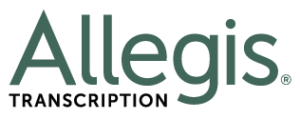From Typist to Transcriptionist: Can You Make the Transition?
See if Your Typing Skills Can Translate into a Successful Career in Transcription
Are you a lightning-fast typist looking to break into transcription? If so, you have probably already noted many of the potential benefits of working as a transcriptionist. After all, most jobs that include heavy typing are office jobs with fixed hours, more than likely a daily commute, and often very limited income potential. Transcribing is different. Let’s look at some of the advantages of working as a freelance transcriptionist:
- Ability to control your income: Compensation for most transcriptionists is production-based, not hourly. So, if you are accurate and fast, you may be able to boost your income.
- Work-from-home: The majority of transcriptionists work-from-home, avoiding the stress of a commute, office politics, and in many cases, alleviating the need for extraneous expenses like day care service.
- Flexible hours and schedule: A career in transcription means that you can (to a large extent) work when you want and as much as you want. Companies often have minimum production requirements, but how you structure your time is generally up to you.
So, if you’re currently in a position where you perform administrative work that involves heavy typing, and you are routinely producing at 75 words per minute or more, you can be assured of two things:
- You are a gifted individual – very few people can type that fast.
- Your typing makes you more productive than the average worker, but it’s not equating to a bigger paycheck.
Therefore, you might be justified in wondering if you can do better. You probably can. But the journey from typist to transcriptionist is not an easy, straight path. Creating your career in transcription is about adapting your typing skills to transcription, and it can be a slow process. Along the way, many people have endured doubts and frustration, failed tests, and repeated rejections. Yet, for most who persevere, they often look back and realize all the hard work was worth it. They had what it took to succeed all along, but just had to learn a few new skills to augment their existing talent.
Here is what you need to know and how to prepare for the journey.
Breaking The Sound (Voice) Barrier
Transcription is simple enough at its core: You type out what you hear. You turn spoken words into text. But the average person talks at about 150 words per minute. If someone is speaking clearly and audibly, assuming they don’t have an accent, a vocal tic of some kind, or even perhaps a cold, will routinely talk too fast for even a very fast typist to keep up. It’s not unusual for some people (we call them fast talkers) to speak at 200 wpm and above!
The challenges don’t end there. Depending on the type of transcription you do, you may encounter groups of people talking over each other and interrupting. You may have to deal with background noise, heavy accents, or emotionally charged speech (such as people laughing or crying). The list is endless.
So, you typically will not be able to type fast enough to keep up with the conversation, In fact, most transcriptionists will need 45-60 minutes to transcribe 15 minutes of audio. This means you will need to modulate the playback speed, pause and resume the playback intermittently, as well as repeat segments that are difficult to hear or understand. This has great potential to slow you down, so you need to find a rhythm between your typing pace and the playback pace. Finding this rhythm will allow you to reach your full potential (and income level).
Listening at a Whole New Level
Just as the above challenges require you to synchronize the playback of the file to your typing speed, you must also improve your listening skills. Hearing it right the first time saves you time and boosts your efficiency. Many successful transcriptionists report an increase in the sensitivity of their hearing when listening to human speech over time. For example, verbatim transcriptionists train themselves to listen to verbal tics (all the “umms” and “uhs” which they have to transcribe). They often find that they experience everyday conversation differently as a result. Whereas the average person will fail to notice many of these sounds, transcriptionists might notice them more.
It is up to science to speculate as to what is happening here, but it has been established that repeated activities often create or strengthen neural pathways in the brain. So perhaps it’s not a stretch to say that this process is a necessary step in “brain training” to tune your listening ability and become a confident and skilled transcriptionist.
Turbo-Typing
Fast is good. You are probably already a fast typist if you are considering a career in transcription. But you need to be more than fast. You need to be fast and efficient. Efficiency is what maximizes your productivity, and productivity determines your income. Transcriptionists employ all sorts of tricks to speed up the process, including:
- Auto-correct: You can customize auto-correct to replace certain characters with full words or phrases, thus giving yourself specialized keyboard shortcuts.
- Macros: can help automate repetitive tasks while transcribing. In short, a macro is a recording of a sequence of actions. Many transcriptionists use macros to input speaker tokens or a combination of word replacement and formatting.
It’s important to expand your typing ability and keyboard skills to include the above strategies. In addition to that, you will need to develop and hone additional skills such as researching, proofing, and understanding dialects. At the end of the day, it is not about how fast you type, but how much you produce.
Finding Your “Flow State”
Transcriptionists are at their most efficient when they can be 100% focused. Some transcriptionists will tell you that they are at their best when they are not conscious of their typing…that it just flows automatically from their fingers as they listen. Since you will most likely work at home as a freelance transcriptionist, it is vital that your home environment lends itself to this type of work. If you have a family living at home, you probably want to carve out a dedicated home office space where you can work uninterrupted. You also may need to set down rules and barriers for other members of the household to ensure that you can have significant blocks of time to work without distractions.
The Blessing (and Curse) of Self-Employment
Most transcriptionists are contract workers, which means that they are technically self-employed. And that’s important, because it means some of the time you put into your job will be managing the extra stuff that comes with self-employment, such as:
- Your tax returns may be more complicated. Contract or “1099” workers get paid the full amount for their work, with no taxes taken out. But this does not mean that Uncle Sam doesn’t still get his cut! You will be responsible for reporting (and paying any applicable taxes on) this income. So that means you need to plan (and save!) appropriately.
- Good News: The IT department is always reachable. Bad news: You are the IT department (although most companies, including Allegis, provide a degree of IT setup assistance). Maintaining your computer, your internet connection, and other vital gear becomes very important. All transcription jobs have deadlines that you must meet, so any downtime can be very detrimental. If you are tech-savvy and comfortable with troubleshooting tech issues, you should be fine.
You Will Need Specific Equipment
Depending on your fondness for tech, this may be a fun aspect of transcription or an unpleasant obstacle. Here are some of the vital tools for speed, efficiency, and comfort. For more detailed advice, browse our “tools for transcriptionist” blog entries to prepare for a career in transcription.
- Computer with high-quality monitor (high resolution monitors reduce eyestrain).
- Supportive, comfortable chair, to promote good posture and avoid back and shoulder problems.
- High-quality keyboard and tray to maintain proper wrist/hand position and consistent key response.
- Foot pedal, for pause/resume/rewind, to allow your hands to remain in primary typing position at all times.
It should be clear by now that being a fast typist is a relatively small (albeit important) aspect of becoming a successful transcriptionist. And the transition is not a simple (or even natural) one. But if all of the above sounds like an interesting challenge, then it could be a sign that you should take the plunge.

























